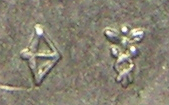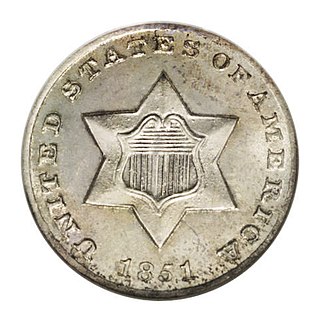History
Mint marks were first developed to locate a problem. If a coin was underweight, or overweight, the mint mark would immediately tell where the coin was minted, and the problem could be located and fixed. Another problem which could occur would be a dishonest mint official debasing the coin, or putting less precious metal in the coin than specified. The first mint marks, called "Magistrate Marks" were developed by the Greeks, and named the Magistrate in charge of producing that coin. Debasing a coin, or otherwise tampering with it, was a very serious crime, often punishable by death in many civilizations. For example, in 1649, the directors of the Spanish colonial American Mint at Potosi, in what is today Bolivia, were condemned to death for seriously debasing the coinage. The initials of the assayer as well as the mint mark were immediate identifiers when the coins were inspected.
In some cases the symbols found in the field of ancient Greek coins indicated mints, not magistrates. Mints in territories conquered by Alexander the Great struck coins with the types he used in Macedon but marked with a local symbol. [1] For example, Rhodes struck coins with Alexander's types marked with a rose, a local symbol previously used on its own coins. [2]
A reform of Diocletian made mint marks a regular feature of ancient Roman coinage. These mint marks were placed at the bottom of the reverse of the coin and contained three parts. The first part indicates that this was a coin with either SM for Sacra Moneta, M for Moneta, or P for Pecurnia. The second part was an abbreviation of the name of the mint such as ROM for Rome or LON for London. The final part indicated the workshop within the mint. [3] The reform of Anastasius, which is the traditional dividing point between the coinage of the Roman and the Later Roman (a.k.a. Byzantine) empires, replaced the mint marks on gold coins by the inscription CONOB, meaning the pure standard of Constantinople, which was used by a variety of mints. Mint marks continued on copper coinage until the second half of the seventh century, however. [4]

Mint names began to appear on French coins under Pepin and became mandatory under Charlemagne. [5] In 1389, Charles IV adopted a system called Secret Points. This scheme placed a dot under the first letter of the legend on coins of Crémieu, under the second letter for Romans, up to the twenty-second letter for Bourges. [6] In the fifteenth century letters or symbols placed at the end of the legend indicating the mint were used in addition to Secret Points. [7] In 1540, Francis I discontinued Secret Points in favor of a system of letters; A for Paris, B for Rouen, …, Z for Lyon; in the field. [8] He also made it the rule for mint-masters to place their personal marks on coins, as they had done with increasing frequency since the coinage of Louis XI. This was one of the few royal practices continued by the Republic of France. [9] The mint letters continued until 1898 (briefly revived in 1914 and from 1942 to 1958) and the mint-masters marks, supplemented by the mark of the Chief Engraver, are still used. [10]
Some Medieval English coins used mint names . [11] When William III retired hammered coinage, branch mints which helped strike machine made coins to replace it put their initials below his bust. [12] The Royal Mint established branches to coin sovereigns near the sources of gold. These issues show the initials of Sydney, Melbourne, Victoria, and Perth Australia as well as Canada, South Africa, and India. [13] The privately owned Soho Mint obtained a contract to strike royal copper coins with steam presses and put its name on these coins and on coins it minted for other countries. When it closed, Ralph Heaton acquired its equipment, founded the Birmingham Mint, and put his H mint mark on coins of Canada, among others.

The Spanish Empire introduced mint marks to the New World when they authorized Mexico City to open a mint on 11 May 1535. The Spanish Empire established mints throughout its American territories, each with their own mint mark. After its revolution, Mexico continued to use its colonial Mo monogram mint mark shown on either side of the date in the Spanish Milled Dollar. The United States of America established mints in Charlotte, North Carolina and Dahlonega, Georgia in 1838 after the Georgia Gold Rush and put its first mint marks on the gold coins struck there. [14] Like other countries, the United States has since placed mint marks not only on its own coins but also those of its territories, such as the Philippines, and other countries for which it has contracts to strike coins, such as Fiji.


















